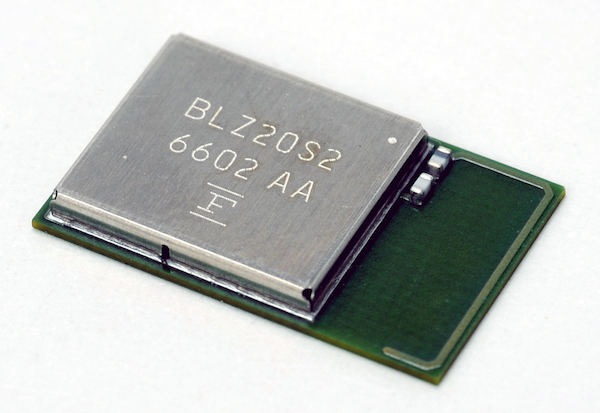Recent Posts
Bluetooth V4.2 Module For Industrial IoT, Medical And Industrial Equipment Applications
Posted by on
Fujitsu's Bluetooth Version 4.2, FWM7BLZ20-series module is designed to minimize time and cost investments to develop low-power Industrial IoT (Internet of Things) applications for medical, instrumentation, industrial equipment, and smart buildings.
The FWM7BLZ20-series module is based on the Nordic nRF52832 SoC with embedded 32-bit ARM® Cortex™ M4 microcontroller, 512KB Flash, 64KB RAM, and integrated antenna. It provides designers with all the required hardware and software in a space-saving 15.7 x 9.8 x 1.7mm package.
With both 32MHz and 32.768kHz crystal oscillators embedded, all 30 GPIOs available for multiple peripheral connections, such as LEDs and sensors. On-chip NFC tag for Tap-and-Pair support (which requires an external antenna) is also included, as well as UART, SPI, SWDCLK, SWDIO, nRESET, TWI, and ADC interfaces.
Although the FWM7BLZ20 is the same size as Fujitsu’s available MBH7BLZ02 Bluetooth 4.1 module, it has half the power consumption (about 5.4 mA: actual measured value) and about double the transmission distance at a receiving sensitivity of -94 dBm.
Features
- Based on the Nordic nRF52832 SoC with embedded 32-bit ARM® Cortex™ M4 microcontroller
- 512KB Flash, 64KB RAM
- Integrated antenna
- Space-saving 15.7 x 9.8 x 1.7mm package
- Embedded 32MHz and 32.768kHz crystal oscillators
- On-chip NFC tag for Tap-and-Pair support
- UART, SPI, SWDCLK, SWDIO, nRESET, TWI, and ADC interfaces
- RoHs compliant and FCC and CE certified
=> Download/View the Fujitsu FWM7BLZ20 data sheet (PDF)...
With Bluetooth Low Energy (Ble), smart devices are about to become even smarter. This practical guide demonstrates how this exciting wireless technology helps developers build mobile apps that share data with external hardware, and how hardware engineers can gain easy and reliable access to mobile operating systems.This book provides a solid, high-level overview of how devices use Ble to communicate with each other. You’ll learn useful low-cost tools for developing and testing Ble-enabled mobile apps and embedded firmware and get examples using various development platforms—including iOs and Android for app developers and embedded platforms for product designers and hardware engineers.
- Understand how data is organized and transferred by Ble devices
- Explore Ble’s concepts, key limitations, and network topology
- Dig into the protocol stack to grasp how and why Ble operates
- Learn how Ble devices discover each other and establish secure connections
- Set up the tools and infrastructure for Ble application development
- Get examples for connecting Ble to iPhones, iPads, Android devices, and sensors
- Develop code for a simple device that transmits heart rate data to a mobile device
 Loading... Please wait...
Loading... Please wait...


